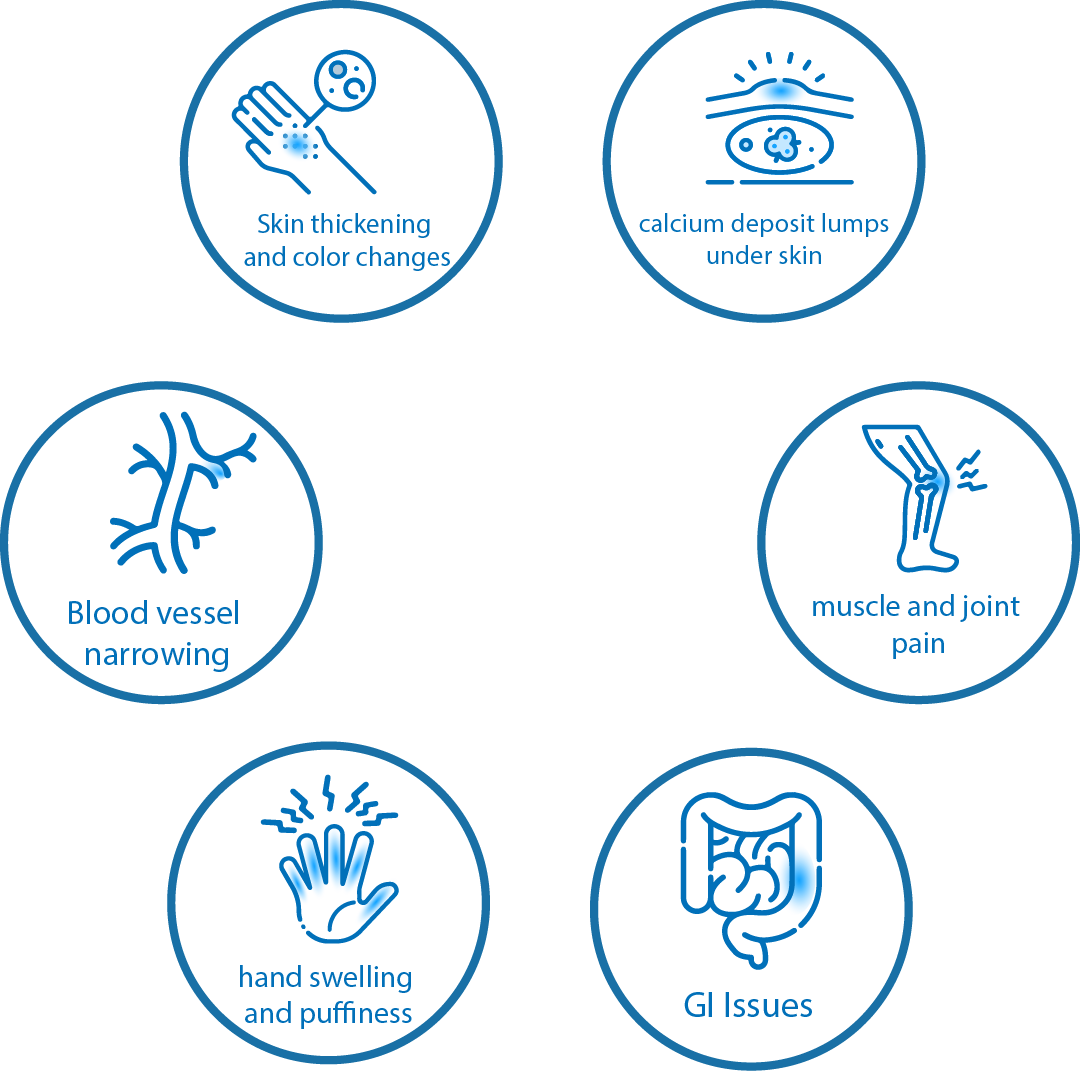Symptoms and Causes
Early symptoms of Scleroderma may include rough skin, tightness of skin around the joints, itching, irritable bowel, fatigue, mood swings, depression, irregular Menstrual cycles, change in facial features, changing color of fingers and toes (white or blue).
It is not a contagious disease, nor is there any sign to prove that it is hereditary or can run in the family.
Scleroderma is an auto immune disease, where the immune system starts attacking itself.

Symptoms of Scleroderma
In addition to the thickening of skin, the following other symptoms may occur in a person with scleroderma:
Nearly everyone who has scleroderma experiences a hardening and tightening of the skin.
The first parts of the body to be affected are usually the fingers, hands, feet and face. In some people, the skin thickening can also involve the forearms, upper arms, chest, abdomen, lower legs and thighs. Early symptoms may include swelling and itchiness. Affected skin can become lighter or darker in colour and may look shiny because of the tightness.
Some people also experience small red spots, called telangiectasia, on their hands and face. Calcium deposits can form under the skin, particularly at the fingertips, causing bumps that can be seen on X-rays.People experience changes in facial features including thinning of lips and nose, reduced opening of the mouth (Microstomia), tightness of eyelids resulting into frequent eye infections and dryness.
Raynaud’s phenomenon is common in scleroderma and occurs because of an inappropriate and exaggerated contraction of the small blood vessels in the fingers and toes in response to the cold or emotional distress. When this happens, the digits may turn white, blue or red, and feel painful or numb. Raynaud’s phenomenon also can occur in people who don’t have scleroderma.
Scleroderma can affect any part of the digestive system, from the oesophagus to the rectum. Depending on which parts of the digestive system are affected, signs and symptoms may include:
- Heartburn
- Difficulty swallowing
- Bloating
- Diarrhoea
- Constipation
- Fecal incontinence
When scleroderma affects the heart or lungs, it can cause shortness of breath, decreased exercise tolerance and dizziness. Scleroderma can cause scarring in the lung tissues that may result in increasing shortness of breath over time. There are medications that may help slow the progression of this lung damage.
Scleroderma can also cause the blood pressure to increase in the circulation that goes between the heart and the lungs. This is called pulmonary hypertension. In addition to shortness of breath, pulmonary hypertension can also cause excess fluid in the legs, feet and sometimes around the heart.
When scleroderma affects the heart, heartbeats can become irregular. Heart failure may also occur in some people.
Causes of Scleroderma
Scleroderma results from an overproduction and accumulation of collagen in body tissues. Collagen is a fibrous type of protein that makes up your body’s connective tissues, including your skin.
Doctors don’t know exactly what causes this process to begin, but the body’s immune system appears to play a role. Most likely, scleroderma is caused by a combination of factors, including immune system problems, genetics and environmental triggers.

